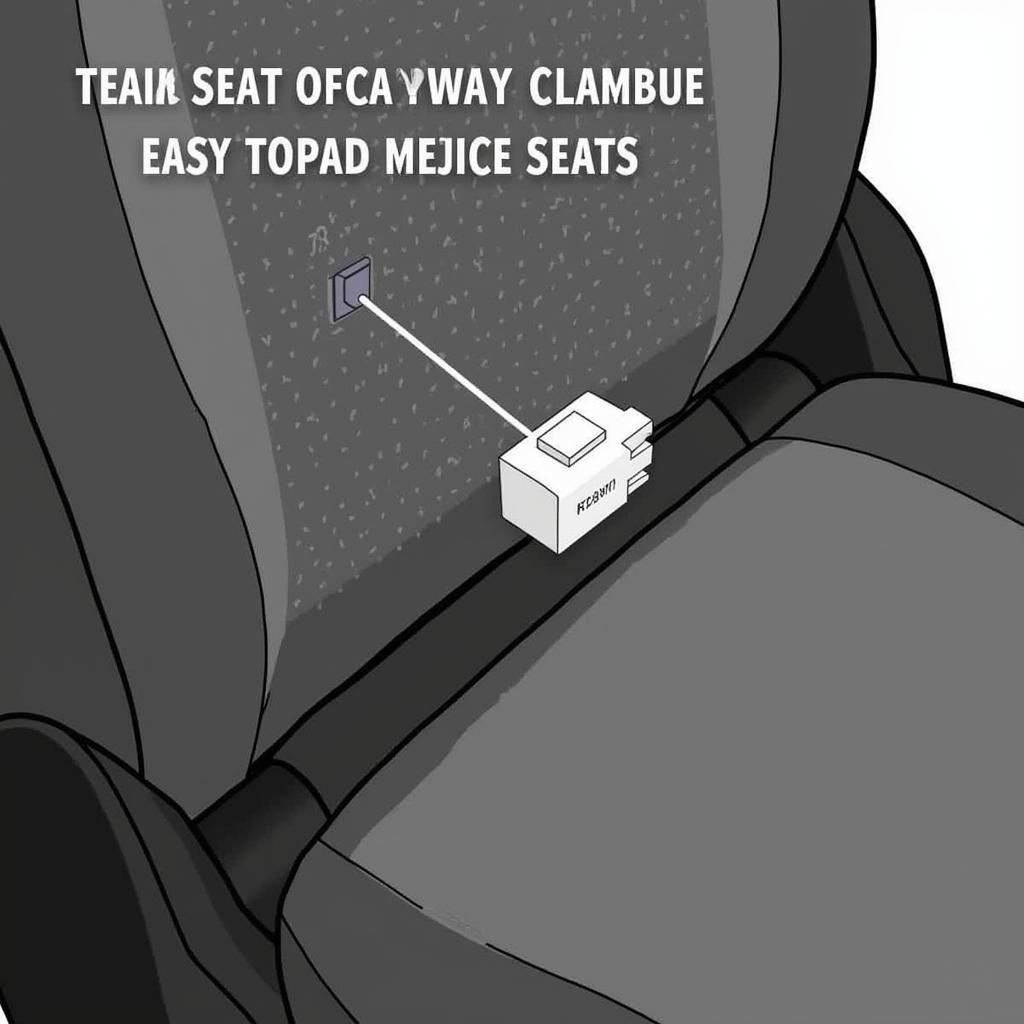If your 1993 Honda Accord’s brake warning light stubbornly refuses to turn off, you’re in the right place. This article will guide you through the common causes and solutions for a persistent brake light issue in your 93 Accord, helping you diagnose and potentially fix the problem yourself.
Understanding Your Accord’s Brake Warning Light
The brake warning light is a crucial safety feature, alerting you to potential issues within your braking system. Ignoring it could lead to dangerous driving conditions. While it can sometimes illuminate due to a simple issue like the parking brake being engaged, a persistent light signals a deeper problem demanding immediate attention.
Common Causes of a Brake Warning Light in a 93 Honda Accord
Several factors can trigger the brake warning light in your 93 Accord. Let’s explore some of the most common culprits:
-
Low Brake Fluid: This is the most frequent cause. A leak in the brake lines, worn brake pads, or a faulty master cylinder can all lead to low brake fluid.
-
Worn Brake Pads: As your brake pads wear down, the brake fluid level in the reservoir drops. If the pads are excessively worn, the warning light will come on.
-
Faulty Brake Light Switch: The brake light switch, located above the brake pedal, can malfunction, preventing the lights from activating and triggering the warning light.
-
ABS Issues: Although less common in a 93 Accord, problems with the Anti-lock Braking System (ABS) can also illuminate the warning light. This typically requires a professional diagnosis.
-
Parking Brake Engaged: A simple oversight, but often the reason for a momentarily illuminated warning light. Ensure the parking brake is fully disengaged.
Diagnosing the Problem
Start with the simplest checks first:
- Check the Parking Brake: Ensure it is fully released.
- Inspect Brake Fluid Level: Locate the brake fluid reservoir and check the fluid level. It should be between the minimum and maximum lines.
If the fluid is low, you may have a leak or worn brake pads. Inspect your brake lines for any signs of leakage, such as wet spots or dripping fluid.
“Regular brake fluid checks are vital for maintaining a safe braking system,” advises John Miller, a seasoned automotive technician with over 20 years of experience. “Low brake fluid can significantly reduce your braking power and increase stopping distances.”
- Test the Brake Light Switch: If the fluid level is okay, the brake light switch might be the culprit. You can test it with a multimeter or by observing the brake lights when depressing the pedal.
Solutions and Repairs
Depending on the diagnosed issue, the solution might range from a simple top-up of brake fluid to more complex repairs:
-
Adding Brake Fluid: If the fluid is low, carefully add the correct type of brake fluid until it reaches the maximum line. Remember, only use brake fluid from a sealed container.
-
Replacing Brake Pads: Worn brake pads necessitate replacement. This is a job that can be done at home with the right tools and a bit of mechanical know-how.
-
Replacing the Brake Light Switch: A faulty switch requires replacement, a relatively straightforward task.
-
Addressing Brake Leaks: Brake leaks require professional attention. Attempting to repair a leak without the necessary expertise can be dangerous.
Conclusion
A glowing brake warning light on your 93 Honda Accord shouldn’t be ignored. By understanding the potential causes and following the diagnostic steps outlined above, you can often pinpoint the issue. While some fixes, like topping up brake fluid, can be handled easily, others, such as brake leaks, require professional help. Remember, a properly functioning brake system is paramount for your safety and the safety of others on the road. Addressing the brake warning light promptly ensures your 93 Honda Accord remains a reliable and safe vehicle.
“Never underestimate the importance of a functioning brake system,” emphasizes Sarah Chen, a certified automotive safety expert. “Regular maintenance and timely repairs can prevent costly issues and ensure safe driving conditions.”
FAQ
-
Can I drive my 93 Honda Accord with the brake warning light on? It’s highly discouraged. Driving with a persistent brake warning light can be dangerous.
-
What type of brake fluid should I use in my 93 Honda Accord? Consult your owner’s manual for the recommended brake fluid type.
-
How often should I check my brake fluid level? Checking your brake fluid level monthly is a good practice.
-
How much does it cost to replace brake pads on a 93 Honda Accord? The cost varies depending on the type of brake pads and whether you do it yourself or hire a mechanic.
-
What are the signs of a brake leak? Look for wet spots or dripping fluid around the brake lines, calipers, and wheel cylinders.
-
Can I reset the brake warning light myself? You might be able to reset brake warning light honda accord 2001, but it’s generally recommended to address the underlying issue first.
-
What should I do if my brake pedal feels spongy? A spongy brake pedal indicates air in the brake lines, requiring immediate professional attention.

